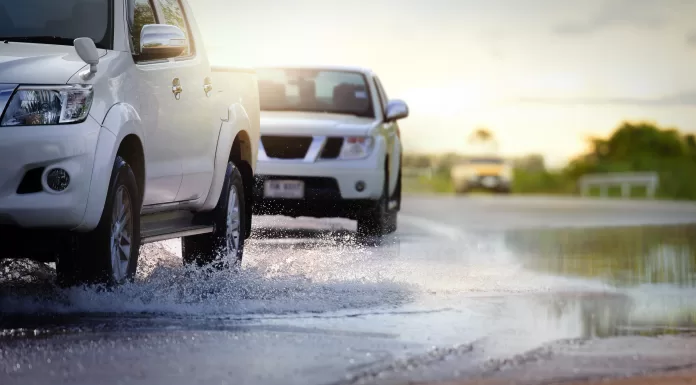Driving in rainy conditions can present a myriad of challenges, with one of the most dangerous being the risk of hydroplaning, where your car loses traction and skids uncontrollably on a rain-soaked highway. Understanding the causes of hydroplaning, maintaining proper tire traction, and knowing how to react swiftly and safely in such situations are crucial skills for every driver. Proper technique isn’t just for show – it’s crucial for staying safe on the road. Mastering corrective steering can mean the difference between a close call and a full-blown accident. So buckle up and read through to learn the ropes!
Causes of Hydroplaning
Hydroplaning is caused by a thin layer of water between your tires and the road. It can turn your smooth drive into a slippery slide. Knowing the risk factors, from worn-out tires to excessive speed, can help you stay ahead of this aquatic waltz.
Impact of Speed and Tire Condition
Speeding increases the likelihood of hydroplaning. Combine that with worn-out tires lacking proper tread depth, and you’ve got a recipe for a slip ‘n slide session on the highway. Proper tread depth is your best defense against hydroplaning. The deeper the grooves, the better they can channel water away from your tires, helping you maintain traction even when the road resembles a soggy sponge.
Driving in the rain is not the time to channel your inner race car driver – keep it slow and steady to stay safe on wet roads. Consider easing off the fuel pedal when the heavens open up to keep your ride safe and steady. Also, watch out for those sneaky puddles and oily patches – they’re like banana peels waiting to trip you up.
Reacting to a Skid: Dos and Don’ts
Stay Calm and Focused
When your car decides to break into an unexpected dance on the wet road, it’s vital to stay as cool as a cucumber. Panicking won’t do you any favors. Keep your focus sharp, your grip firm, and your breathing steady as you navigate through the slippery situation.
Avoid Abrupt Steering Movements
No need for sudden swerves like you’re dodging imaginary obstacles. Abrupt steering movements can send your car spinning faster than a DJ’s turntable. Instead, make smooth and gradual adjustments to help regain control and steer your way out of the skid dance gracefully.
Techniques for Regaining Control of Your Vehicle
Steer into the Skid
It may sound counterintuitive, but when your car decides to show off its drifting skills, steer into the skid rather than away from it. This technique helps align your tires with the direction of the skid, giving you a better chance of regaining control and keeping your ride on track.
Gradually Apply the Brakes
Don’t slam on the brakes. Gradually applying the brakes can help slow down your car without sending it into a tailspin. Ease on the pressure, feel the grip return, and glide your way back to safety like a pro.
Brake Strategically with ABS
Anti-lock Braking Systems (ABS) are like your car’s own personal dance partner when things get slippery. These systems prevent your wheels from locking up during sudden braking, helping you maintain control and steer clear of trouble. ABS works by rapidly pumping the brakes for you, so you can focus on navigating your way out of a slippery situation.
When your car starts sliding on a rain-soaked highway, remember to apply firm, steady pressure on the brake pedal. Trust your ABS to do its job and prevent your wheels from locking up. Keep both hands on the steering wheel and steer in the direction you want to go. ABS may cause some pulsation or noise, but that’s just your car working its magic to keep you safe.
Maintain a safe following distance from other vehicles. Leaving more space between you and the car in front gives you time to react if they skid. slowdown on slippery conditions, and avoid sudden maneuvers that could lead to skidding. Stay vigilant, anticipate potential hazards, and always be ready to react calmly and decisively when mother nature decides to test your driving skills.
So there you have it! – a quick guide to tackling hydroplaning with finesse and skill. Remember, staying prepared and reacting calmly can help you navigate the slippery roads, leaving hydroplaning in the rearview mirror where it belongs. Stay safe out there, road warriors!
By Dorcas Kang’ereha




